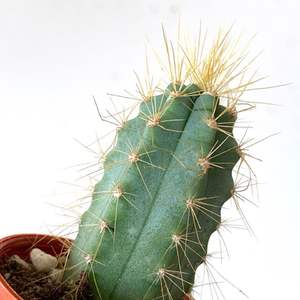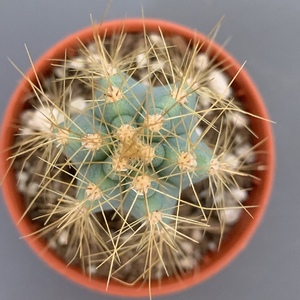植物经验
详细说明
Pilosocereus pachycladus is one of the most spectacular, columnar, tree-like cacti. It is up to 33 feet (10) tall and ramify at the base or develops a distinct trunk with dozens of erected, bluish-silver branches up to 4.4 inches (11 cm) in diameter. The stems are turquoise or light blue-green. The areoles are up to 0.4 inch (1 cm) in diameter, with white to grey felt and long white bristles. The spines are translucent with yellow hue turning grey as they get old. The flowers are more or less funnel-shaped, whitish with greenish or reddish outer segments, up to 3 inches (7.5 cm) long and up to 1.8 inches (4.5 cm) in diameter.
How to Grow and Care
Like most cacti, Cereus are fairly, low-maintenance and hardy. Make sure they receive enough water without becoming waterlogged, especially during the summer, and fertilize them for best results. If the roots have become black or overly soft, the cactus could be experiencing root rot – cut away the affected parts and replant. Most gardeners interested in cacti should be able to cultivate these without much problem.
It may become necessary to repot your Cereus if it outgrows its container. If so, make sure the soil is dry and then remove the pot. Knock away old soil and prune away any rotted or dead roots, then replace it in a new pot and backfill with new soil. Make sure not to overwater cacti planted in new pots, as this can lead to root rot – it should be left dry for about a week and then watered lightly.
Growing Conditions
Light: Like all cacti, give them lots of direct sunlight, especially during the summer.
Water: Cereus plants need slightly more water than most other cacti, and their soil should usually be kept moist during the growing season.
Temperature: Though hot temperatures are best, most of these are hardy plants that can tolerate down to about 20 degrees Fahrenheit (-7 degrees Celsius).
Soil: Well-drained soil is best, and most Cereus perform well in a soil that contains some organic material. Some recommend avoiding a soil that contains sphagnum moss, though – it can make the cactus vulnerable to root rot.
Fertilizer: They should be fertilized during their growing season in the summer with a good cactus fertilizer.
Propagation
Cereus cacti propagate quite easily from cuttings; simply sever a branch and replant in moist, well-drained soil. It helps to allow the cut end dry out and harden before you replant it; this makes it easier for the new cactus to form roots.
How to Grow and Care
Like most cacti, Cereus are fairly, low-maintenance and hardy. Make sure they receive enough water without becoming waterlogged, especially during the summer, and fertilize them for best results. If the roots have become black or overly soft, the cactus could be experiencing root rot – cut away the affected parts and replant. Most gardeners interested in cacti should be able to cultivate these without much problem.
It may become necessary to repot your Cereus if it outgrows its container. If so, make sure the soil is dry and then remove the pot. Knock away old soil and prune away any rotted or dead roots, then replace it in a new pot and backfill with new soil. Make sure not to overwater cacti planted in new pots, as this can lead to root rot – it should be left dry for about a week and then watered lightly.
Growing Conditions
Light: Like all cacti, give them lots of direct sunlight, especially during the summer.
Water: Cereus plants need slightly more water than most other cacti, and their soil should usually be kept moist during the growing season.
Temperature: Though hot temperatures are best, most of these are hardy plants that can tolerate down to about 20 degrees Fahrenheit (-7 degrees Celsius).
Soil: Well-drained soil is best, and most Cereus perform well in a soil that contains some organic material. Some recommend avoiding a soil that contains sphagnum moss, though – it can make the cactus vulnerable to root rot.
Fertilizer: They should be fertilized during their growing season in the summer with a good cactus fertilizer.
Propagation
Cereus cacti propagate quite easily from cuttings; simply sever a branch and replant in moist, well-drained soil. It helps to allow the cut end dry out and harden before you replant it; this makes it easier for the new cactus to form roots.
花相册 (10)
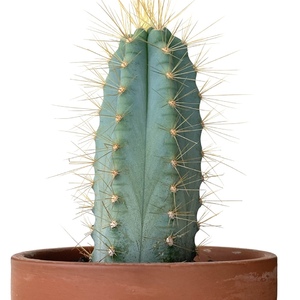
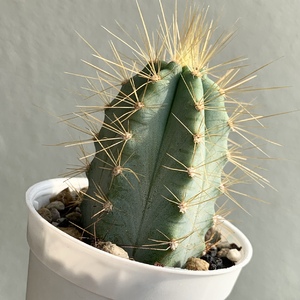
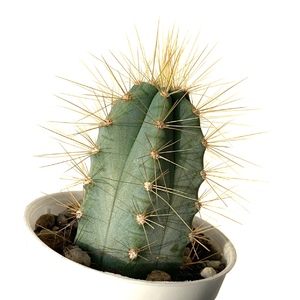
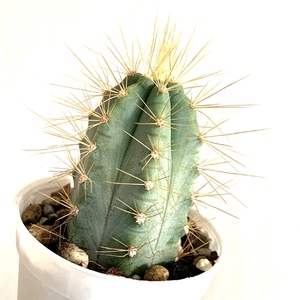

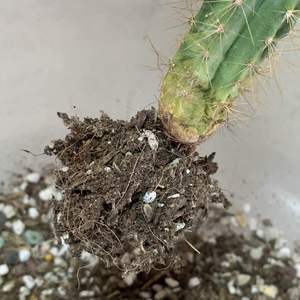

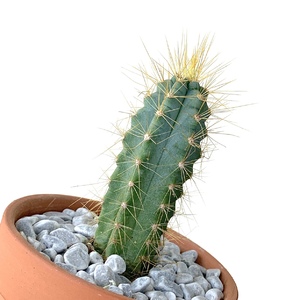
kensong
2019年09月09日

Repotted. It has grown quite a bit.


kensong
2019年06月24日

The cut section is established and growing well.






kensong
2019年03月20日

Base rotted so had to cut and let it callus before repotting.




kensong
2019年03月05日

Repotted into terracotta pot.




kensong
2019年01月21日

This is my first growing diary. From AugustFame RM10.
